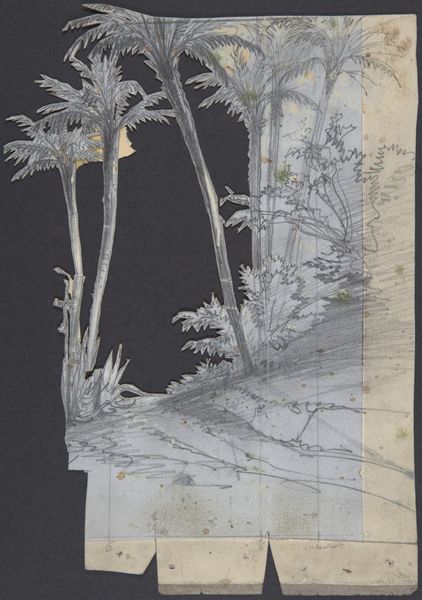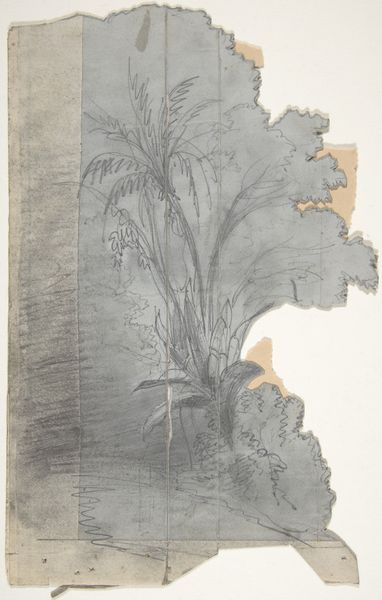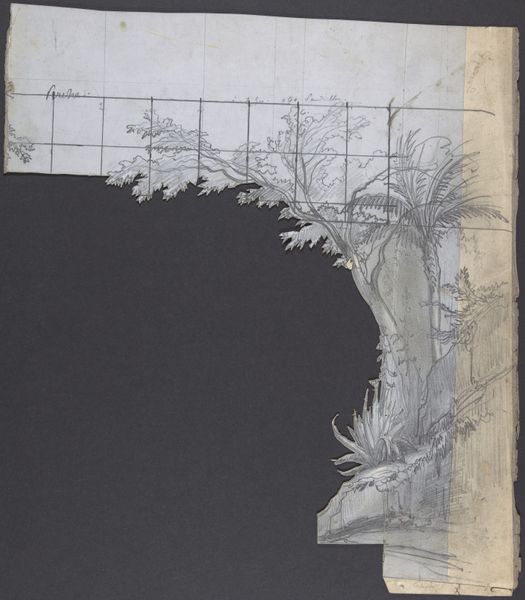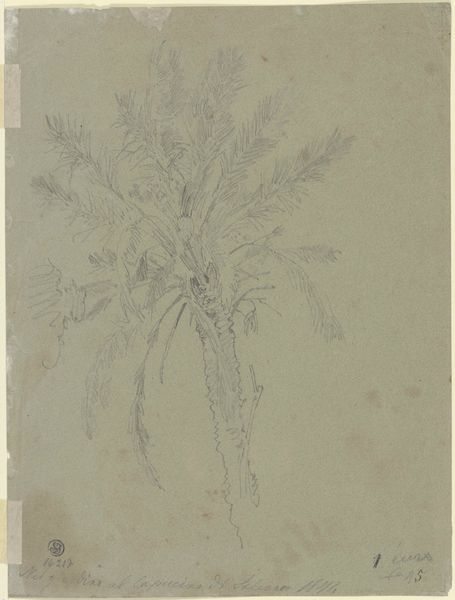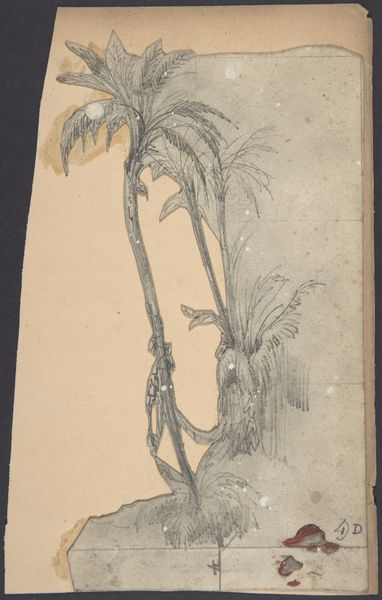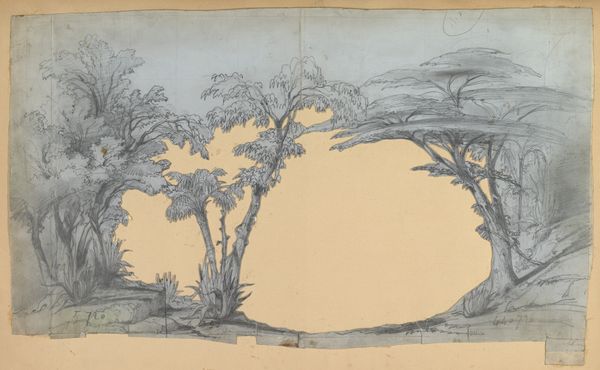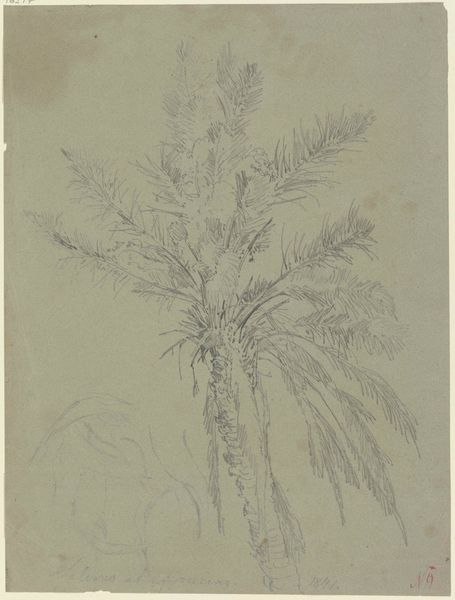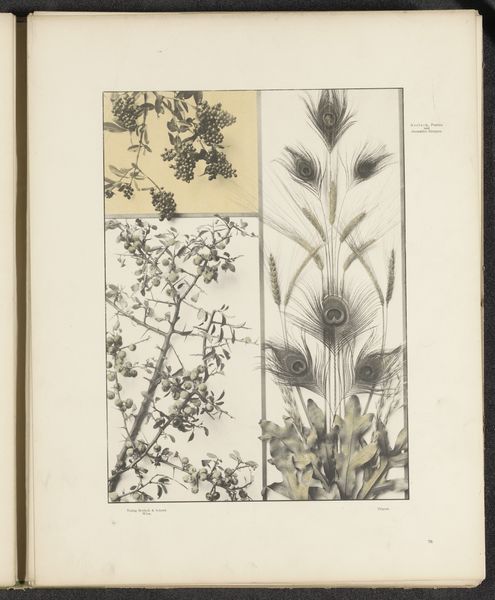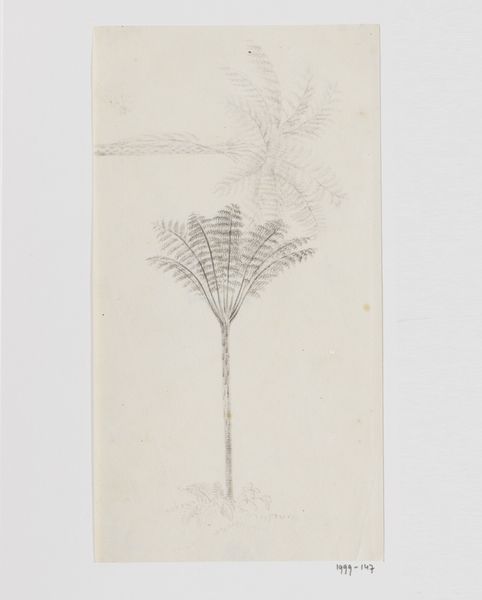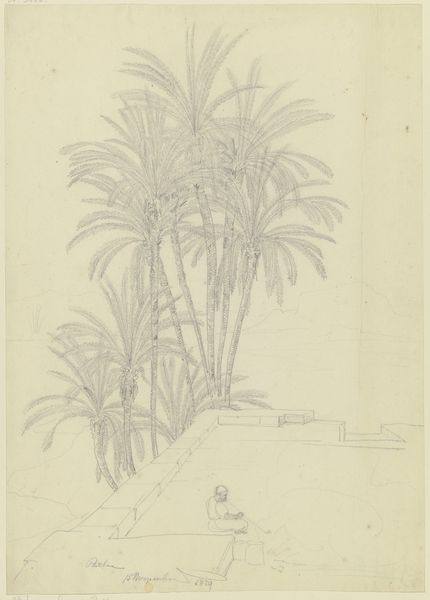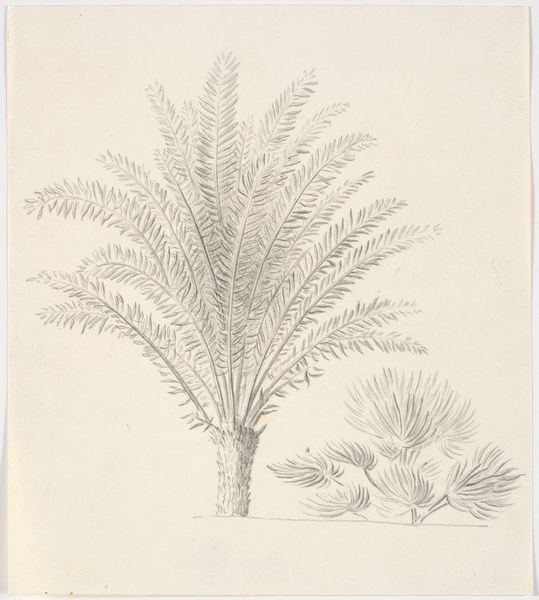
Design for a Stage Set at the Opéra, Paris 1830 - 1890
0:00
0:00
drawing, print, paper, pencil
#
drawing
# print
#
landscape
#
paper
#
pencil
Dimensions: Irregular sheet: 12 1/4 x 8 5/8 in. (31.1 x 21.9 cm)
Copyright: Public Domain
Curator: Oh, I get a definite lost-world vibe here. There’s something fragile and unreal about it. Editor: Indeed. We are looking at Eugène Cicéri's "Design for a Stage Set at the Opéra, Paris," dating roughly from 1830 to 1890. Currently, it resides at the Metropolitan Museum of Art. Curator: Stage set, huh? I can see it. Pencil and maybe some charcoal on paper, right? It feels… preliminary. Like a ghost of something grander. Editor: Correct, though listed more plainly as a drawing and a print. The grid underlying the landscape certainly supports your interpretation of it being in the nascent design stages, yet for what kind of operatic moment does it stage? A scene on the Nile? Some exotic island? Curator: Well, the palm trees practically scream "exotic." But there's this delicate, almost mournful quality to the shading that complicates the paradise picture. It’s like Eden after the fall, all sketched out. And the different palm design as pasted in from a different surface is pretty telling about revisions! Editor: The use of palm imagery here really situates the piece within a lineage of representing the exotic "Orient" for a European audience. Operas during this time often exoticized foreign cultures. Cicéri's design would’ve contributed to that visual language, though perhaps with your darker edge, making something once revered a barren reminder of loss. Curator: Loss of innocence, perhaps. Or maybe just the fading fantasy of the other. It certainly makes me wonder what sort of drama played out against this backdrop, even in the drawing, it's got a narrative all its own. Editor: Indeed. I like the sense of layered realities you bring to this unassuming pencil sketch. We get a peek behind the scenes into the operatic fantasy-making machine itself. Curator: Well, if all the world's a stage, this piece lets us see a little of how those stages are built and imagined. It also reminds me of how our vision is just a combination of what's past, our culture, our hopes and anxieties about tomorrow, layered and ready for a moment of song.
Comments
No comments
Be the first to comment and join the conversation on the ultimate creative platform.
